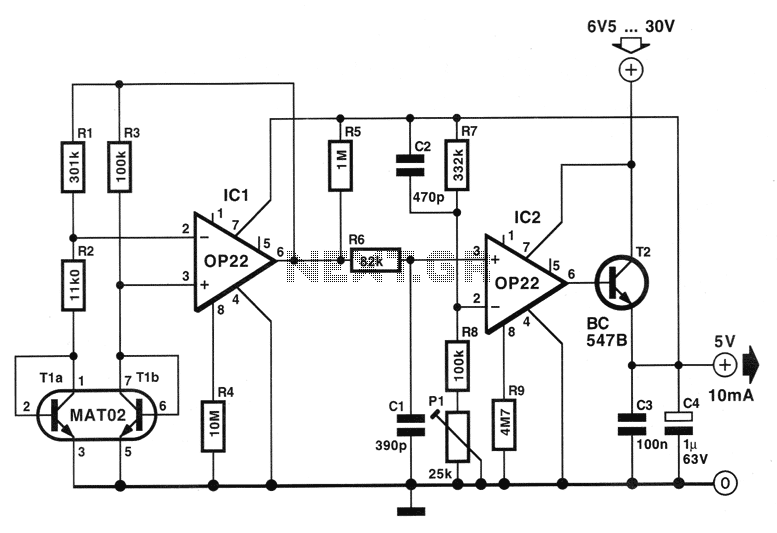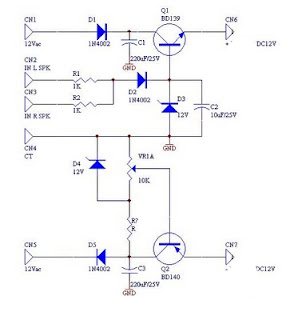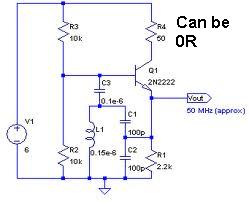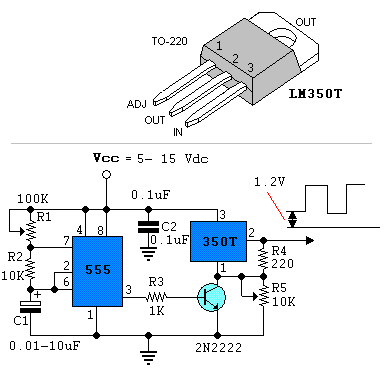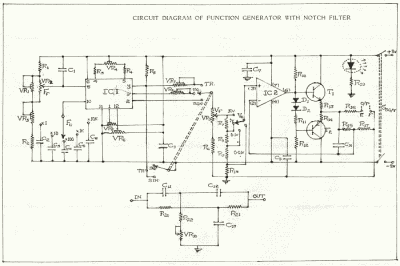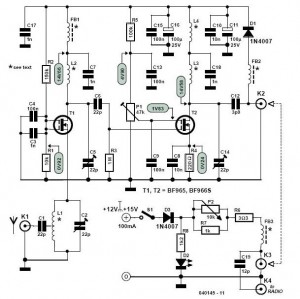
Light-Controlled Oscillator Circuit
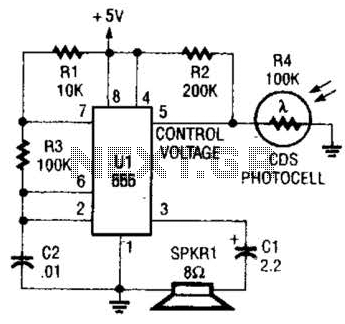
This circuit can be utilized as a light detector and potentially as a tool for individuals with visual impairments. The frequency of the oscillator is influenced by the level of illumination received by LDR4.
The circuit operates by employing a Light Dependent Resistor (LDR), specifically LDR4, which serves as the primary sensor for light detection. The resistance of LDR4 decreases with increasing light intensity, allowing it to effectively monitor ambient light levels. The circuit is designed to convert the varying resistance of the LDR into a corresponding frequency output through an oscillator configuration.
In this setup, the LDR is integrated into an oscillator circuit, which may include components such as operational amplifiers, resistors, and capacitors. As light levels change, the resistance of LDR4 alters the charging and discharging rates of the capacitor in the oscillator circuit, thereby modifying the frequency of the output signal. This output can be used to trigger other devices or systems, providing feedback to the user about the surrounding light conditions.
For applications aimed at assisting visually impaired individuals, the circuit can be further enhanced with audio feedback mechanisms. For instance, a speaker or buzzer can be connected to the output of the oscillator, producing sound signals that vary in pitch or frequency based on the detected light levels. This auditory feedback can help users navigate their environment by indicating whether the area is well-lit or dimly lit.
In summary, this light detection circuit leverages the properties of LDR4 to provide a variable frequency output that can be utilized in various applications, particularly in enhancing the mobility and awareness of visually impaired users. The design can be adapted with additional components to improve functionality and user experience, making it a versatile tool in assistive technology. This circuit can be used as a light detector and possibly as an aid for the visually handicapped. The frequency of the oscillator is determined by the amount of illumination striking LDR4. 🔗 External reference
The circuit operates by employing a Light Dependent Resistor (LDR), specifically LDR4, which serves as the primary sensor for light detection. The resistance of LDR4 decreases with increasing light intensity, allowing it to effectively monitor ambient light levels. The circuit is designed to convert the varying resistance of the LDR into a corresponding frequency output through an oscillator configuration.
In this setup, the LDR is integrated into an oscillator circuit, which may include components such as operational amplifiers, resistors, and capacitors. As light levels change, the resistance of LDR4 alters the charging and discharging rates of the capacitor in the oscillator circuit, thereby modifying the frequency of the output signal. This output can be used to trigger other devices or systems, providing feedback to the user about the surrounding light conditions.
For applications aimed at assisting visually impaired individuals, the circuit can be further enhanced with audio feedback mechanisms. For instance, a speaker or buzzer can be connected to the output of the oscillator, producing sound signals that vary in pitch or frequency based on the detected light levels. This auditory feedback can help users navigate their environment by indicating whether the area is well-lit or dimly lit.
In summary, this light detection circuit leverages the properties of LDR4 to provide a variable frequency output that can be utilized in various applications, particularly in enhancing the mobility and awareness of visually impaired users. The design can be adapted with additional components to improve functionality and user experience, making it a versatile tool in assistive technology. This circuit can be used as a light detector and possibly as an aid for the visually handicapped. The frequency of the oscillator is determined by the amount of illumination striking LDR4. 🔗 External reference
Warning: include(partials/cookie-banner.php): Failed to open stream: Permission denied in /var/www/html/nextgr/view-circuit.php on line 713
Warning: include(): Failed opening 'partials/cookie-banner.php' for inclusion (include_path='.:/usr/share/php') in /var/www/html/nextgr/view-circuit.php on line 713
